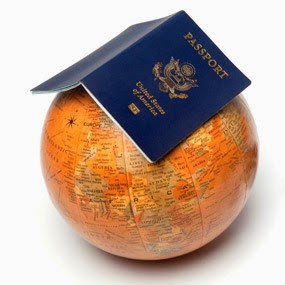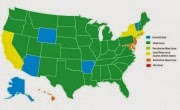
As we approach the end of the session, some will be scrapped, but a few of these will make it to vote and will probably pass. You can influence those decisions by engaging with your legislators. Here is what you need to know at a minimum, but as always, don’t just take my word for it, the links to the text are included in the title.
Feel free to post any ideas, concerns about individual bills and thoughts others can use when writing their legislators. Remember, when writing politicians, use plain, simple English written at an 8th grade level. Remove the emotion and keep it very short or you will lose their attention. Five hundred one paragraph emails are far more powerful than 50 long winded diatribes that no one will read!
AB 48, Nancy Skinner, D – Firearms: ammunition: sales
This bill proposes that ammunition purchases be recorded and reported if they exceed certain volume requirement – currently at 6,000 rounds in seven days. Additionally, it bans high-capacity magazines and kits that hold more than 10 rounds regardless of the date of acquisition.
- There is no linkage between large purchases of ammunition and violence. There is no link between magazine capacity and violence. Criminals will easily circumvent both of these requirements and neither will improve public safety. This is yet another burden placed on lawful gun owners with zero impact on crime.
AB 169, Roger Dickinson, D – Unsafe handguns
This bill limits the number of private party transfers a person may be involved in, in a two year period. This will further limit California citizens access to firearms that have paid the state mandated testing fee’s and added state mandated features.
- None of these features or tests improve the safety of the firearm, and many of them actually detract from its functionality. All of them provide a false sense of “safety” that may actually result in unsafe handling procedures by untrained individuals.
AB 711 – Anthony Rendon, D - Hunting: Non Lead Ammunition
This bill makes it illegal to hunt with leaded ammunition.
- This will increase the cost of bullets and shot used to hunt and we can expect that it will be expanded if enacted to all ammunition sold in the state. I have mixed feeling about this. The main reason for denial of range construction is the California Environmental Quality Acts draconian lead standards. The elimination of lead from the equation will massively undermine that line of denial. That said, lead is some pretty bad stuff, but if you are so cheap that you choose to eat it, vice using steel shot – this is still America and I support your right to do so until it can be proven (which definitively has NOT been shown) that lead from ammunition is infiltrating water supplies.
SB 53 – Kevin De Leon, D – Ammunition:
This proposes to subject ammunition purchases to nearly the same level of ridiculous scrutiny of the purchase of a firearm requiring the vendor to be licensed by the state, the buyer to have been approved by the state and still require a background check and exhaustive list of information to be taken and retained by the seller for each purchase. Further it limits the internet and mail order shipments into the state.
- This will most likely be vetoed by Gov. Brown as it is similar to AB 962, which is currently held up in the courts (since 2009). Brown also vetoed similar legislation last year stating that additional ammunition restrictions were pointless until the resolution of AB962. This ludicrous restriction is one of De Leon’s many attempts to eliminate guns from every citizen in the state. Once again, this will be an administrative burden increasing the cost of ammunition for law abiding citizens, and will do nothing to stop criminal importation from neighboring states at better prices. It will likely result in increased funds for criminals via the sale of black market ammunition form neighboring states.
SB 374 – Darrell Steinberg, D – Firearms: assault weapons
This bill attempts to redefine anything with a detachable magazine or a tube magazine over 10 rounds as an assault rifle, requiring registration of all existing rifles and restricting sales in the future.
Detachable magazines and fixed capacity have never been linked to mass murder, and the underlying “logic” of this bill is that criminals will somehow feel bound to abide by it. It does nothing to promote public safety.
SB 396 – Loni Hancock, D – Magazine capacity
This is a modified defeated bill that used to propose to ban all magazines that hold more than 10 rounds, regardless of the date acquired. It now appears to focus on something entirely non-gun related and it is not uncommon to modify bills that are impassable to quickly get a new topic on the floor for consideration.
- With 3 of these pointless magazine restriction measures on the books, I would expect at least one of them to pass.
SB 567 – Hannah-Beth Jackson, D Firearms: shotguns
This bill attempts to redefine semiautomatic shotguns with what is similar to the “evil features” list on AR platform rifles as assault rifles.
- Restricting characteristics vice capability has proven expensive to litigate, easy to circumvent and been grossly ineffective at the intent which is limiting the availability of the “evil features” to the public.
SB 755 – Lois Wolk, D – Firearms: prohibited persons
This bill expands the list of misdemeanor convictions prohibiting firearms possession and add in numerical limits on total misdemeanors.
- I am not a fan of arming people who have criminal records, however, misdemeanor offenses are defined as “minor wrongdoing” and I do not support limiting my fellow Americans constitutional rights based on minor wrongdoing…
***I would however support the above bill if it was coupled with an equivalent lifelong restriction on their ability to vote. Only because we would remove 90% of the names of bill sponsors on this article in the next election cycle by eliminating their political base from the equation. Do not use that as a basis for your argument against the bill….
As the legislative session comes to a close on August 31, it is time to start paying attention to what is happening. Many of these will end up in the hands of the governor for veto or signature by Sept. 30. Your voice, or email may very well be the one that puts a stop to these pointless and ineffective laws. Take a few minutes to get familiar with the key issues, and draft a few points to send to the appropriate senator, assemblyman or to the governor when the time comes.
You can find more credible reading on these and other gun related legislation at the National Rifle Association Institute of Legislative Affairs and CalGuns Legislative forums.
Stay informed and stay free – Ignorance and complacency are the keys to the socialist agenda!
About Author
Patrick Henry - President & Firearms Instructor at Aegis Academy

First Published at Aegis Academy







